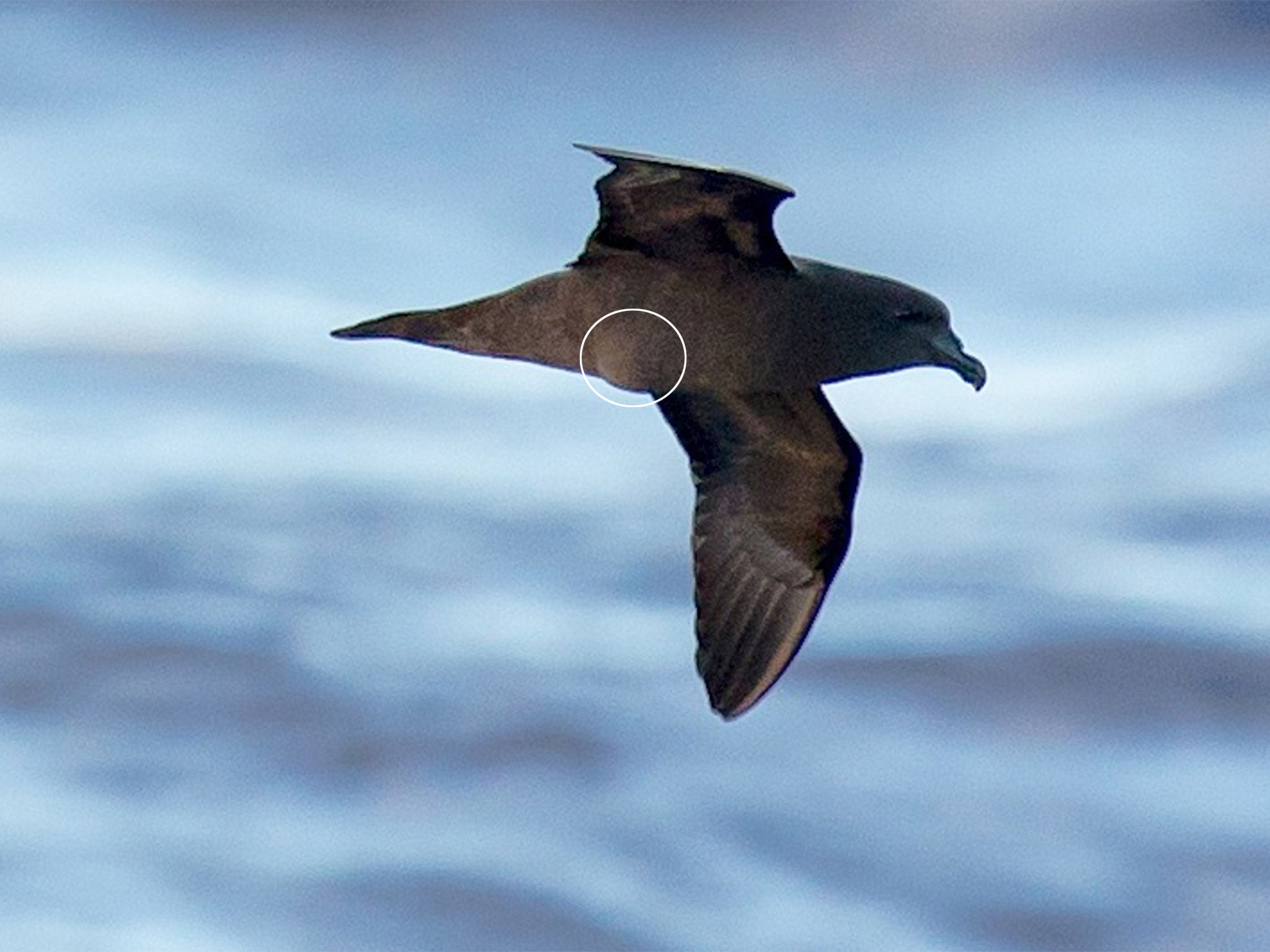Scientists take first ever photograph of bird with a visible egg
Image of endangered Mascarene Petrel showed egg because it was 'disproportionately huge'

A unique photograph has been taken of a bird with a visible egg showing after experts sent to study a critically endangered Mascarene Petrel on a remote Indian Ocean tropical island encountered an undeniably pregnant member of the species.
The picture, thought to be the first of its kind for any bird – stationary or in flight – has been greeted with widespread excitement by the bird-watching community.
It was made possible by the collision of a series of unusual factors.
The first comes down to the feathers. While land bird species are generally so well-feathered it’s difficult for the egg to peep through, the feathers of some seabirds – such as the Petrel – hug the body shape much tighter to protect it from getting wet.
The only problem is that seabirds generally nest in burrows in the land and typically only come to that land under cover of darkness, making them hard to spot – pregnant or otherwise.
The species gave the photographer a further helping hand because its eggs are “disproportionately huge” – although the extreme rareness of the bird makes its contribution to the photo history books all the more extraordinary, according to BirdLife International, the conservation group that released the picture and compiles the official Red List of endangered birds.
It also helps that the bird was flying because it’s easier to spot an egg if its stretched out and overhead than huddling in a tree or underground. Finally, she was incredibly heavily pregnant when the photo was taken.
“Against the background of a pinkish-orange sunset, with Reunion Island in the distance, I spotted a petrel through my camera’s viewfinder. Almost immediately I saw the outline of an egg, a huge bump at its belly,” said photographer Hadoram Shirihai, a renowned bird expert.
“She flew close to the boat which gave me a unique chance to photograph her just before the sun set. It was a magical moment and to think that in less than an hour she would probably lay her egg and contribute to the future survival of this threatened species,” he added.
The photo is also the first to be taken of a Mascarene Petrel at sea.
The species spends most of its time in the ocean and only comes to land to breed. Once the birds pair up and mate the female goes back out to sea and the egg develops while she feeds it.
Join our commenting forum
Join thought-provoking conversations, follow other Independent readers and see their replies
Comments